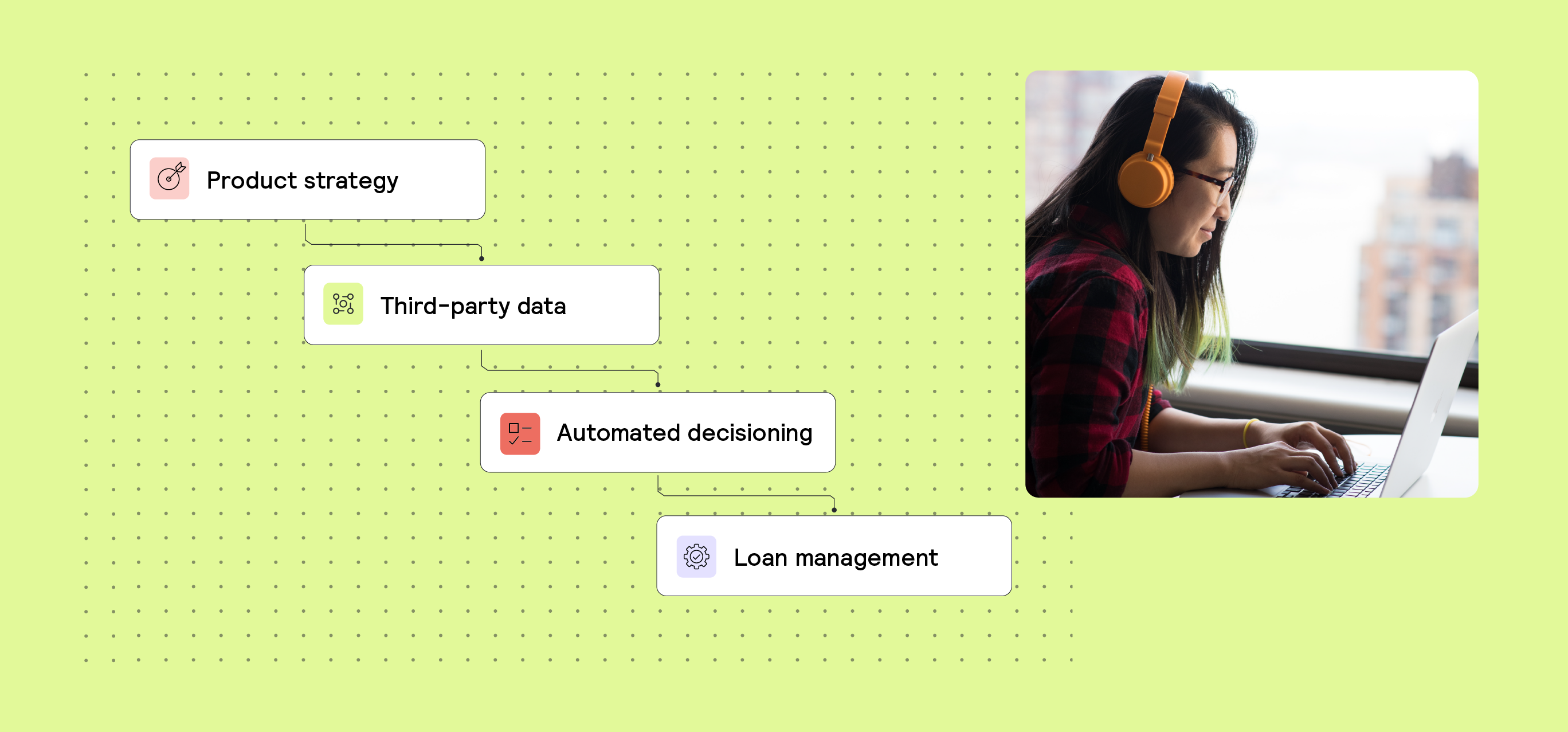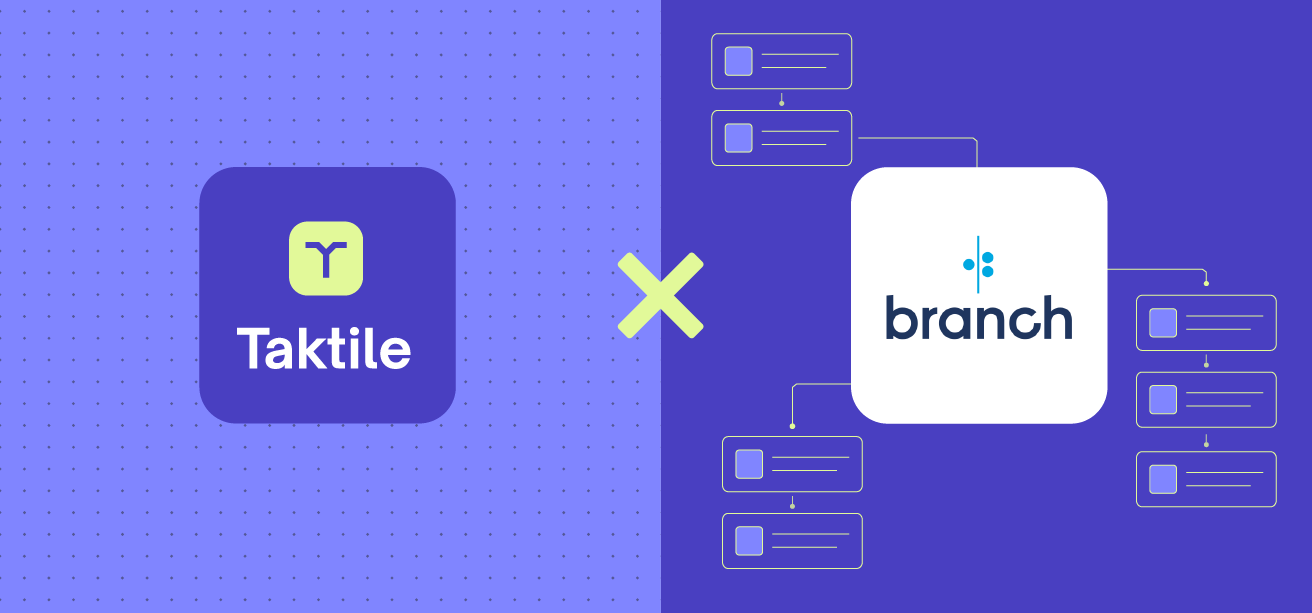Fintech 3 min read
2023: Top 5 trends in the next chapter of fintech

Rapid fintech growth in emerging markets
Embedded lending: The race to convenience
The buy-now-pay-later shift from B2C to B2B
SMEs: The holy grail of lending unlocked
A critical addition to the fintech stack: Decisioning
After a challenging 2022, fintechs are changing tack going into the new year. Success will be determined by profitability rather than growth at any cost, which means fintechs will have to work harder than ever to optimize their processes, reduce risk, and make highly effective decisions.
As we near the end of the year, we have highlighted five key trends that will bring transformative changes to the fintech sector in 2023.
1. Rapid fintech growth in emerging markets
An influx of fintechs relying on SaaS-based tech stacks and alternative data
A critical success factor for fintechs in next year’s economic environment will be their ability to genuinely solve customer problems. One market that is ripe with opportunities to deliver true value and meet acute customer needs is emerging markets.
For example, in cash-heavy markets like Africa and Latin America, fintechs are jumping on board pro-digitization movements to create financial services for underserved customer segments. And this is not just limited to fintechs. Visa, for example, recently announced its plan to invest $1 billion in Africa over the next five years in response to the rapid growth in e-payments.
Insights:
- Now that funding levels are at an all-time high in emerging markets, the infrastructure of financial services has entered a new phase of development.
- This growing infrastructure will enable fintechs to offer more advanced products, such as retail and SME lending, and banking as a service. For example, Belvo is already enabling fintechs to connect to open finance data to drive financial inclusion in Latin America.
- As customers become more digitally empowered in these markets, fintechs will increasingly rely on alternative data points, such as cell phone metadata, to minimize risk and create highly customized product offerings. Branch is already one fintech at the forefront of this in emerging markets.
2. Embedded lending: The race to convenience
Unprecedented demand leads fintechs to a new era of value proposition in lending
In the US alone, annual embedded lending revenues are estimated to grow to $13 billion by 2026. Why? People prefer using services embedded in their purchase flows.
As global businesses push the boundaries on time and speed of service, being able to offer immediate lending options to business customers in the sales cycle will be a crucial differentiator going into the new year. Even more, embedding lending enables any business to become a fintech - allowing them to derive extra revenue from financial services.
Insights:
- Embedded lending will experience unprecedented demand (from both consumers and businesses), which will create opportunities for new fintech partners to provide solutions that are as seamless and secure as possible.
- Within embedded lending, fintechs will focus on carving out specific propositions for both consumers and businesses that drive value within different segments at customer, platform, and regulation levels. Tilta (Europe focus) and Kontempo (Latin America focus), for example, are providers enabling any B2B marketplace to become a lender.
- Leveraging advanced data analytics and machine learning will enable embedded lenders to differentiate themselves and offer best-in-class, personalized financial products.
3. The buy-now-pay-later shift from B2C to B2B
Focus moves from consumers to businesses for growth in 2023
Buy-now-pay-later (BNPL) providers caused waves in the fintech sector this year, and there is no doubt consumers will continue to rely on them going into 2023. But in the current macro environment, B2C BNPL providers are seeing increasing delinquencies as consumers' repayment ability comes under pressure. So for fintechs in this space to remain profitable, they need to seek out new or additional avenues of growth.
Until recently, BNPL providers have shied away from the B2B segment because of its higher risk and increased transaction complexity, such as longer sales cycles and higher levels of customization. But it represents a huge growth opportunity for BNPL providers. It is a largely untapped market, and there is rapidly expanding demand from businesses for more flexible payment options.
Insights:
- We expect to see a consolidation of major B2C BNPL market players as pressures to become more profitable increase in the current macro environment.
- The larger values of business transactions provide higher margins for BNPL providers and, therefore, more opportunities for profitable growth going into 2023.
- As a result, BNPL providers will be incentivized to be at the forefront of innovation in the B2B payments space - introducing industry-specific solutions that increase business access to finance.
4. SMEs: The holy grail of lending unlocked
Shift towards open finance enabling lenders to expand their offerings to SMEs
Until recently, SMEs have been largely underserved by lenders globally. This is because it is harder to assess credit risk when there is little to no credit history and heterogenous revenue and expense streams–particularly when compared to larger or more established companies.
The increasing uptake of open banking and the transformative shift towards open finance has changed the game for lenders. Enabled by innovative open finance data providers, lenders can now accurately assess the risk of SMEs to provide customized financial products. And, in turn, drive financial inclusion in this segment.
Insights:
- Going into 2023, successful SME lenders will leverage high-quality data sources (using providers like Plaid or Codat) to create accurate risk assessments of SMEs with a high degree of automation.
- This includes aggregating insights from accounting, open banking, and alternative data sources such as Google Reviews, LinkedIn analyses, and sentiment analysis on Twitter to make more inclusive credit decisions.
- For fintechs, this means a considerable reduction in costs incurred by manual processes in SME lending, and for SMEs, it means faster and more transparent applications and a higher likelihood of getting approved.
5. A critical addition to the fintech stack: Decisioning
Leveraging data and machine learning as the key to profitable growth
As fintechs enter the new year in an altered economic landscape, being resilient and adaptable has never been more critical. While they will continue to challenge incumbents with their lean processes, it will not be enough for fintechs to rely on providing unique customer experiences to generate growth.
Instead, optimizing processes and effectively managing risk will be what differentiates fintechs and enables them to grow profitably. So for any trend to have a real impact in 2023, fintechs need to have best-in-class approaches to decisioning.
Insights:
- To rapidly respond to market changes and continuously optimize risk assessment, fintechs will have to leverage novel data sources, such as cell phone metadata in KYC approvals, to make automated, data-driven decisions that drive growth.
- Fintechs will rely more on machine learning in their decisioning, which will revolutionize how they assess and optimize risk, compliance, fraud, and more.
- SaaS providers (like Taktile) will make it easy for fintechs to integrate state-of-the-art decisioning processes into their tech stack - and, therefore, adjust their risk selection and launch products more quickly to achieve profitable growth going into 2023.
Taktile: The leading software provider in decisioning
State-of-the-art lenders worldwide use Taktile, a leading software provider that helps lenders grow profitably by empowering non-technical and technical teams to quickly build, evaluate, and iterate on automated decision flows that combine expert rules and predictive models.
In addition, Taktile enables decision-makers to experiment continuously and make highly accurate risk assessments through seamless data integrations requiring zero maintenance. From ready-to-use credit bureau data to highly customized KPIs generated from raw transaction data, Taktile takes care of the implementation for you.





